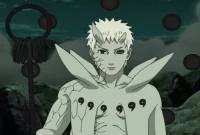The Naruto series has captivated fans worldwide with its intricate storyline and compelling characters. Created by Masashi Kishimoto, Naruto underwent significant changes throughout its run, introducing new concepts and altering existing ones. These changes, aimed at expanding the narrative and creating plot twists, impacted character development, plot focus, and the overall evolution of the story.
One of the notable changes made by Kishimoto was the introduction of Kurama and Shukaku. Initially depicted as separate monsters, they later became known as Bijuu. The term Bijuu was not introduced early on, demonstrating how Kishimoto modified the story and information as the series progressed.
Another significant concept introduced later in the series was that of Jinchuuriki, individuals who become vessels for the Bijuu. This concept added depth to the storyline and played a crucial role in character arcs, particularly Naruto’s.
However, not all changes in the Naruto series were seamless. The limitations on certain techniques, such as the Chidori and Raikiri, became inconsistent in later parts of the story. This inconsistency stirred debates among fans, questioning the coherence of these powerful techniques.
Perhaps the most surprising change was the revelation of Naruto’s lineage. Initially portrayed as an underdog character working hard to become stronger, it was later revealed that Naruto is a descendant of the Otsutsuki clan. This revelation shifted the perception of his character and added a new layer of complexity to the story.
The sudden introduction of Kaguya as the final enemy also divided opinions among fans. Initially, Madara was conceived as the ultimate antagonist, but his manipulation by Kaguya turned the tables. This plot twist sparked controversy and raised discussions about the direction of the storyline.
As expected, these changes brought forth differing opinions among fans. Some embraced Kishimoto’s alterations, considering them as necessary for expanding the narrative and introducing new elements. On the other hand, some fans had reservations, feeling that these changes deviated from the original essence of the series.
Kishimoto’s decision to modify certain aspects of the story can be attributed to both storyline coherence and creative choices. As the creator, he had the freedom to shape the Naruto series in a way that he believed would keep the story engaging and appealing to the audience.
Throughout the series, the concept of the Bijuu and their relevance also evolved. Initially seen as formidable creatures, their roles expanded, and their significance in the story grew. This evolution played a significant role in shaping the narrative arc and the growth of the characters involved.
Undoubtedly, Kishimoto’s alterations to the Naruto story contributed to its overall narrative arc. While some changes were met with mixed reactions, they undeniably enhanced the depth and complexity of the story, allowing it to resonate with fans on a deeper level.
In conclusion, the Naruto series underwent significant changes in its storyline and information under the helm of creator Masashi Kishimoto. These alterations expanded the narrative, added plot twists, and shaped character development. Whether they were embraced or met with reservations, there is no denying the impact these changes had on the evolution of the Naruto series.




